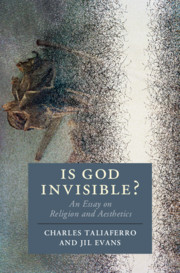Book contents
- Is God Invisible?
- Cambridge Studies in Religion, Philosophy, and Society
- Is God Invisible?
- Copyright page
- Contents
- Figures
- Web Figures
- Acknowledgments
- Introduction
- 1 Aesthetic Personalism
- 2 Is God Invisible?
- 3 The Gates of Perception
- 4 The Perception of Gates
- 5 The Beautiful Gate
- 6 Revealing and Concealing
- 7 Public Perception of Religious and Art Objects
- 8 A Personal Guide to the Aesthetic Experience of Works of Art
- Epilogue
- Index
5 - The Beautiful Gate
Published online by Cambridge University Press: 30 March 2021
- Is God Invisible?
- Cambridge Studies in Religion, Philosophy, and Society
- Is God Invisible?
- Copyright page
- Contents
- Figures
- Web Figures
- Acknowledgments
- Introduction
- 1 Aesthetic Personalism
- 2 Is God Invisible?
- 3 The Gates of Perception
- 4 The Perception of Gates
- 5 The Beautiful Gate
- 6 Revealing and Concealing
- 7 Public Perception of Religious and Art Objects
- 8 A Personal Guide to the Aesthetic Experience of Works of Art
- Epilogue
- Index
Summary
Religious traditions hold the sacred to be beautiful and desecration to be ugly. Is this a glib, pious claim, masking a sentimental attachment to outdated categories? Or, is beauty still a guiding force in understanding what is valuable? Should our sense that an event or a person’s act is ugly guide our judgment?
Hans Urs von Balthasar, a twentieth-century theologian, developed a theology of beauty. He submitted that without an allegiance to beauty, along with her “sisters” truth and goodness, our lives would be fallow and loveless.
- Type
- Chapter
- Information
- Is God Invisible?An Essay on Religion and Aesthetics, pp. 90 - 112Publisher: Cambridge University PressPrint publication year: 2021

